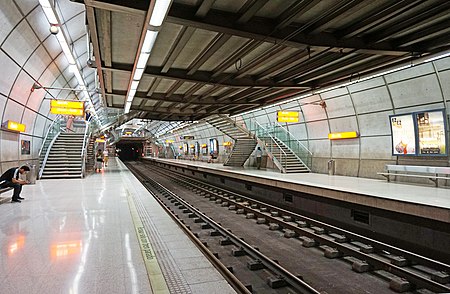Abando (Bilbao metro)
1995 establishments in the Basque Country (autonomous community)Bilbao metro stationsBuildings and structures in BilbaoRailway stations opened in 1995

Abando is a station on lines 1 and 2 of the Bilbao metro. The station is located in the neighborhood of Abando, in the district with the same name. The station is located close to Bilbao-Abando railway station, to which it is directly connected. It opened on 11 November 1995. It is one of the busiest stations in the network.
Excerpt from the Wikipedia article Abando (Bilbao metro) (License: CC BY-SA 3.0, Authors, Images).Abando (Bilbao metro)
Gran Vía Don Diego López de Haro / On Diego Lopez Haroko kale nagusia, Bilbao Abando
Geographical coordinates (GPS) Address Nearby Places Show on map
Geographical coordinates (GPS)
| Latitude | Longitude |
|---|---|
| N 43.262777777778 ° | E -2.9338888888889 ° |
Address
Gran Vía Don Diego López de Haro / On Diego Lopez Haroko kale nagusia 40
48009 Bilbao, Abando
Autonomous Community of the Basque Country, Spain
Open on Google Maps









